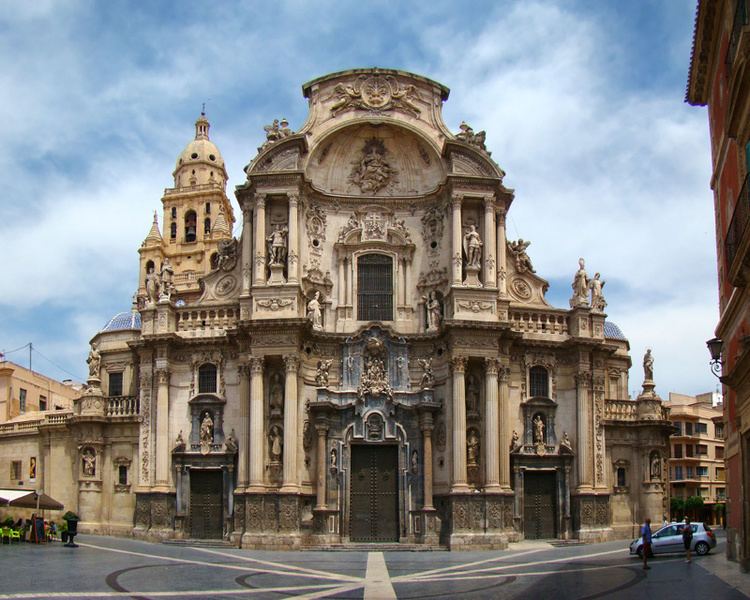Groundbreaking 1394 Height 92 m | Affiliation Roman Catholic Completed 1465 | |
 | ||
Architectural styles Renaissance architecture, Baroque architecture, Neoclassical architecture, Gothic architecture Architects Jaume Bort i Melià, Jerónimo Quijano, Jacopo Torni, Ventura Rodríguez, Francisco Florentino Similar Episcopal Palace of Murcia, Casino de Murcia, Museo Salzillo, Santuario de la Fuensanta, Segura | ||
The Cathedral Church of Saint Mary in Murcia (Spanish: Iglesia Catedral de Santa María en Murcia), commonly called the Cathedral of Murcia, is a church in the city of Murcia, Spain. It is the only cathedral in use in the Roman Catholic Diocese of Cartagena in Spain.
Contents
History
When the Christian king Jaime I the Conqueror conquered the city, in spite of the existing pact with the Muslims of the city that prevented destroying any mosque, the king Jaime I took the Great Mosque or Aljamía to consecrate it to the Virgin Mary, since he had the custom to offer a mass to Our Lady whenever he conquered a village. The cimentation of the cathedral begun in the 13th century, in the same place where the great mosque stood. In 1385 the laying of foundations began and in 1388 the first stone was laid. But it was not until 1394 that the construction began, which would be finished in October 1467. Nevertheless, the cathedral continued to grow until the 18th century, which means that the cathedral is made of a variety of artistic styles.
The heart and the entrails of the king Alfonso X the Wise are buried under the main altar of the cathedral, as he indicated in his testament, as a gift and proof of his love to Murcia and in thanks to the fidelity that the city showed to him.
As previously stated, the artistic style of the building is very varied because it was finished in the 18th century. Its interior is Gothic; the facade is Baroque and it was made by the Valencian architect and sculptor Jaume Bort i Meliá.
Bell tower
The bell tower, built between 1521 and 1791, stands 90 metres (300 ft) tall—95 metres (312 ft) with the weathervane. Is the tallest campanile in Spain. It ascends in five stages of different widths. The tower also combines a melange of styles.
Bells
There are twenty-five bells, all of the 17th century and the 18th century. Each has its own name. Among them are:
The bells have also served to warn the population about the catastrophic floods of the Segura River, wars, celebrations, and festivities. The oldest bell (14th century), la Campana Mora (the moor bell), is kept in the Museum of the Cathedral of Murcia.
Interior
The interior is mainly Gothic. It is made up of three naves with an apse and twenty-three chapels. The chapels are dedicated to the patron saints of the labor unions and to the burials of the bishops and nobles that fomented or collaborated with the construction of the cathedral. Some chapels can be emphasized:
The Plateresque chairs of the choir, post-choir, and the portal of the sacristy, are significant.
